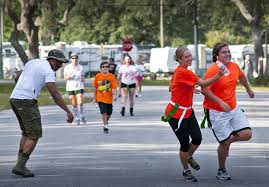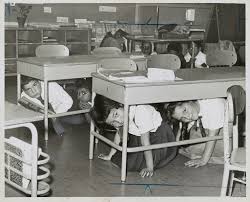As Americans, we cherish our right to be free and independent. We generally want limited government interference to enjoy our right of liberty and happiness. However, on occasions when outside forces such as terrorism threaten these freedoms, we expect government intervention in the interest of keeping us safe. In response to acts of terrorism we have accepted taking off our shoes and passing through metal detectors before boarding an airplane, all requirements imposed by the government. Unfortunately, some threats become so politically mired that, despite the need, the government offers no solutions leaving us to fend for ourselves. Today, the common threat not addressed by the government is that of the active shooter.
 An active shooter is defined as an individual actively engaged in killing or attempting to kill people in a confined and populated area, typically with a firearm. Regrettably, active shooter incidents have been steadily on the rise. There were 30 documented events in 2017, punctuated by the October shooting at Mandalay Bay in Las Vegas that resulted in 58 persons being killed and hundreds injured. In 2018, there have already been 30 active shootings nationwide. Yet, despite these numbers, the government continues to debate gun control, arming or not arming teachers, adding armed security in schools, and other knee jerk responses without offering any practical solutions. While active shooters have attacked a number of targets this year, specifically the acts of violence in our schools have significantly increased. For example, during the first half of this year in the United States, there has been an average of one firearm attack per month at a school during the school hours. Still, no solutions have been implemented by the government. Meanwhile, children are still mandated to participate in monthly school fire drills, despite the fact that no child has been killed in a school fire in the last 50 years.
An active shooter is defined as an individual actively engaged in killing or attempting to kill people in a confined and populated area, typically with a firearm. Regrettably, active shooter incidents have been steadily on the rise. There were 30 documented events in 2017, punctuated by the October shooting at Mandalay Bay in Las Vegas that resulted in 58 persons being killed and hundreds injured. In 2018, there have already been 30 active shootings nationwide. Yet, despite these numbers, the government continues to debate gun control, arming or not arming teachers, adding armed security in schools, and other knee jerk responses without offering any practical solutions. While active shooters have attacked a number of targets this year, specifically the acts of violence in our schools have significantly increased. For example, during the first half of this year in the United States, there has been an average of one firearm attack per month at a school during the school hours. Still, no solutions have been implemented by the government. Meanwhile, children are still mandated to participate in monthly school fire drills, despite the fact that no child has been killed in a school fire in the last 50 years.
Of course, the problem with the active shooter is not limited to schools. There have been numerous examples of violence in the workplace as well. In some cases, businesses are even less prepared to address this threat as most do not have even the most basic of emergency response plans, such as practicing a fire drill. The current threat of an active shooter is real and not likely to diminish any time soon. While most in government stand idly by, in the spirit of American independence, for the foreseeable future it will be incumbent upon individuals to protect themselves from this threat of violence.
Due to the fact that most businesses and schools do not conduct active shooter drills, when such a situation happens, most persons are unclear as to how to respond. Nevertheless, this can change by undertaking a little effort to understand the problem and plan on how to properly react.
Historically, most of the deaths in an active shooter incident occur within the first five minutes of the attack. Even with armed law enforcement responding from close by, or as in some cases being physically present already, the damage is usually done before police can intervene. Therefore, it is the actions taken during the initial moments of an active shooter incident by those affected that dictates the best chance of survival.
 It’s more than simply walking out of the building, as we are trained to do during a fire drill. Instead, it is knowing what to do in either the office or classroom; Knowing an immediate way to escape, or finding a secure place to hide and, in a worst-case scenario when there is no other choice, to be prepared to fight back. Although the government promotes the view of “run, hide, fight,” it is important to understand what these concepts mean so that you will know how to react should an incident occur.
It’s more than simply walking out of the building, as we are trained to do during a fire drill. Instead, it is knowing what to do in either the office or classroom; Knowing an immediate way to escape, or finding a secure place to hide and, in a worst-case scenario when there is no other choice, to be prepared to fight back. Although the government promotes the view of “run, hide, fight,” it is important to understand what these concepts mean so that you will know how to react should an incident occur.
Run involves fleeing via whatever means is necessary, such as breaking windows to get out of a building. It’s unlikely that any office or school would ever promote destroying their property, yet sometimes this may be the only option to get away. When preparing for an active shooter event, all the options to survival must be considered, so in the workplace or at school think in advance of what avenue of escape you might take.
 Hiding is not just blocking yourself away from the attacker, but also making sure you have a way to get out as soon as the opportunity arises. There is little sense in hiding under a desk if the attacker finds you, because your physical movement will be restricted and prevent you from getting away. It is better to locate a place to hide where you cannot be found, like an office or closet where the door can be locked from inside. This way, even if you are discovered and cannot run away, you have barricaded yourself away from the attacker who cannot gain entry.
Hiding is not just blocking yourself away from the attacker, but also making sure you have a way to get out as soon as the opportunity arises. There is little sense in hiding under a desk if the attacker finds you, because your physical movement will be restricted and prevent you from getting away. It is better to locate a place to hide where you cannot be found, like an office or closet where the door can be locked from inside. This way, even if you are discovered and cannot run away, you have barricaded yourself away from the attacker who cannot gain entry.
Finally, fighting may be the least desirable option, but if you cannot get away or hide, make sure you are prepared to defend yourself. Give some thought in advance as to what you might do to fight, such as throwing chairs, desks or anything else will distract the shooter them from the ability to fire a weapon. It is important to understand that active shooter training teaches fighting your attacker not to win, but rather to take actions just long enough to create an opportunity for you to then get away.
 With more than 20 years of experience in law enforcement, I can say the active shooter tragedy will likely continue for the foreseeable future. The next active shooter incident is not a matter of if, but when. We cannot wait around helplessly until the government finds solutions to this problem, but rather we must empower ourselves to ensure our own personal safety. Understanding the proper response to an active shooter event is exactly that empowerment that can keep you alive.
With more than 20 years of experience in law enforcement, I can say the active shooter tragedy will likely continue for the foreseeable future. The next active shooter incident is not a matter of if, but when. We cannot wait around helplessly until the government finds solutions to this problem, but rather we must empower ourselves to ensure our own personal safety. Understanding the proper response to an active shooter event is exactly that empowerment that can keep you alive.
John Iannarelli is a retired FBI Special Agent and the author of “How To Spot A Terrorist Before It’s Too Late,” which identifies indicators of planned acts of violence and how to respond in such situations. To hear his talk at FreedomFest go to 2018.freedomfest.com or call 1-855-850-3733.


no replies